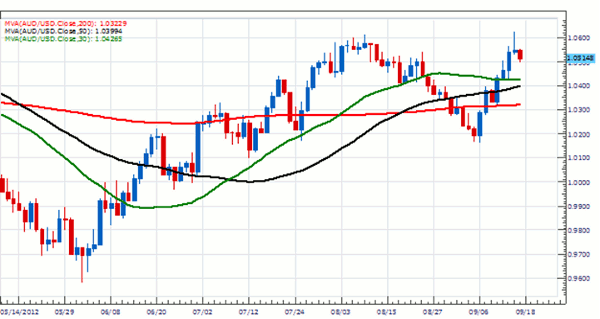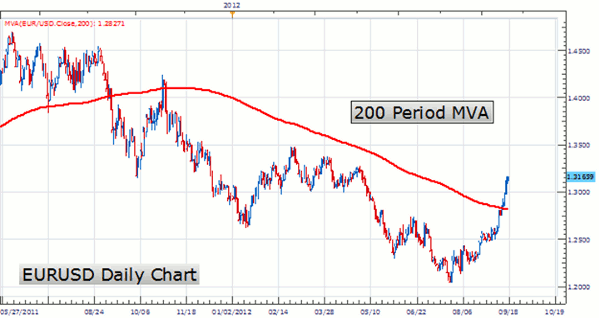Walker England of DailyFX.com explains how currency traders can find good trading opportunities using this indicator.
Technical traders are confronted with many choices when it comes to which indicators to use in their trading. More often than not, Forex traders at one point in their career turn to moving averages (MAs) for finding market trends and momentum.
Surprisingly, after learning to analyze MAs, traders often find they are able to quickly identify different types of price action they could not pinpoint before without technical indicators on their charts.
Using moving averages can help give a trader an advantage when planning a trading strategy. So let’s get started learning about how to read moving averages.
How to Read Moving Averages
The image above represents some of the more commonly used moving averages, including 30 (Green), 50 (Black), and 200 (Red) period MA. These indicators are technical tools that simply measure the average price or exchange rate of a currency pair over a specified period of time.
If we are looking specifically at a 200-period moving average, the indicator is adding the closing price of the last 200 candles on the graph. Then that total is divided by 200 to pinpoint where the indicator is plotted on the graph.
Because Moving Averages represent an average closing price over a selected period of time, they do have the ability to filter out excess market noise. For example, we can see on the EUR/USD chart below that price is under the 200-period MA.
Since price is trading above this moving average, traders may prefer opportunities to buy while avoiding selling opportunities. The same can be true for smaller-period moving averages as well. As price crosses either above or below these plotted levels on the graph, it can be interpreted as either strength or weakness for a specific currency pair.
Moving Average Crossovers
Some traders may choose to use more than one moving average, as depicted in our primary graph. When using a series of moving averages, traders can employ a crossover trading strategy.
These traders will choose a series of averages and view the trend as down when the shorter period (faster) moving average is residing below the longer period (slower) moving average. This method of using more than one indicator can be extremely useful in trending markets, and is similar to using the MACD oscillator.
It should be noted that moving averages will move sideways in a ranging market. In these conditions, moving averages will begin to bunch together, as no new pricing highs or lows are created and lose their effectiveness. In the event of this occurring, traders should consider another indicator based on prevailing market conditions.
Walker England is a trading instructor at DailyFX.com.


















